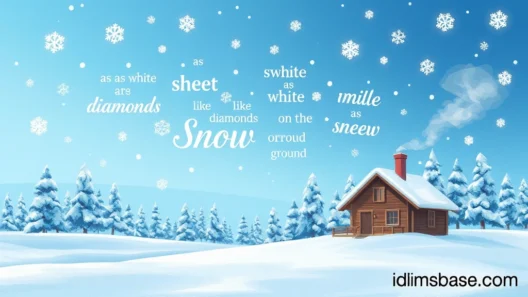Have you ever tried to describe something moving so quickly that it almost seems to defy the laws of physics? Perhaps a cheetah chasing its prey, a rocket launching into space, or even your internet connection on a good day! Finding the perfect words to capture that exhilarating rush can be tricky. But don't worry, we've got you covered! Similes are fantastic literary tools that let us compare two unlike things using "like" or "as," bringing a vividness and clarity to our descriptions. They help paint a picture in the reader's mind, making your writing truly come alive.
In this listicle, we're going to zoom through 40 incredible similes for speed. Whether you're a writer looking for inspiration, a student trying to spice up an essay, or just someone who loves the power of language, you're in for a treat. Get ready to add some serious velocity to your vocabulary!
Unlocking the Power of Speed: 40 Similes That Sizzle!
Describing speed isn't just about saying "fast." It's about conveying the feeling, the impact, and the sheer exhilaration of rapid movement. These similes will help you do just that, offering diverse ways to express velocity.
Similes Comparing Speed to Natural Phenomena and Animals
Nature provides some of the most powerful metaphors for speed. Think about the raw power and unstoppable force of natural elements.
- As fast as lightning: A classic for a reason! It perfectly captures sudden, blinding speed.
- Like the wind: This evokes a sense of effortless, flowing movement.
- As quick as a flash: Similar to lightning, emphasizing instantaneous appearance and disappearance.
- Like a blur: When something moves so fast it loses its defined shape.
- As swift as an arrow: Direct, precise, and incredibly rapid.
- Like a cheetah: The ultimate land animal for speed, embodying explosive acceleration.
- As quick as a gazelle: Graceful, agile, and incredibly fast.
- Like a hummingbird's wings: Describing rapid, almost imperceptible motion.
- As fast as a greased pig: A humorous yet effective way to describe something slippery and hard to catch.
- Like a streak: Implies a continuous, unbroken line of speed.
Similes Comparing Speed to Objects and Technology
From everyday items to high-tech marvels, objects can also be wonderful benchmarks for speed.
- As fast as a bullet: Emphasizes extreme, piercing speed.
- Like a rocket: Suggests powerful, upward, and accelerating motion.
- As quick as a wink: A very short, instantaneous action.
- Like a speeding train: Conveys immense momentum and unstoppable force.
- As fast as a runaway train: Even more emphasis on uncontrolled, high-speed movement.
- Like a hot knife through butter: Effortless and smooth, despite the speed.
- As quick as a whip: Sharp, sudden, and precise.
- Like a bolt from the blue: Unexpected and incredibly fast, often with a surprising element.
- As fast as thought: Highlighting the incredible speed of mental processes.
- Like a race car: Built for pure speed, embodying sleekness and power.
Similes Comparing Speed to Actions and Human Experiences
Sometimes, the best way to describe speed is by relating it to actions we perform or experiences we have.
- As quick as a cat: Agile, stealthy, and incredibly responsive.
- Like greased lightning: A more colloquial and emphatic version of "as fast as lightning."
- As fast as your shadow: Always there, always following, almost instantly.
- Like a shot: Sudden, direct, and very fast.
- As quick as a bunny: Small, nimble, and darting.
- Like a bat out of hell: Extremely fast and wild, often implying a desperate escape.
- As fast as a squirrel: Quick, darting, and unpredictable movements.
- Like a flash of light: Instantaneous and dazzling.
- As quick as a hiccup: Short, sharp, and over before you know it.
- Like a whirlwind: Chaotic, powerful, and rapidly moving.

More Similes to Supercharge Your Descriptions
Here are ten more fantastic similes to broaden your expressive range when talking about speed.
- As fast as time flies: A common saying that beautifully captures the subjective experience of speed.
- Like wildfire: Spreading rapidly and uncontrollably.
- As swift as the wind: Elegant and effortless movement.
- Like a rocket taking off: Implies immense power and acceleration.
- As quick as a hiccup: Again, emphasizing brevity and speed.
- Like a blur of motion: When details are lost due to extreme speed.
- As fast as a speeding bullet: A classic for a reason, thanks to Superman!
- Like a ghost in the night: Silent, swift, and almost imperceptible.
- As quick as a fox: Cunning, agile, and very fast when needed.
- Like a phantom: Evoking a sense of something fleeting and impossibly fast.
Why Do We Need So Many Similes for Speed?
You might be wondering, "Why 40 similes? Isn't 'fast' enough?" The truth is, language is all about nuance. Using a variety of similes allows you to:
- Avoid Repetition: Nobody wants to read the same description over and over again.
- Add Vividness: Similes paint clearer, more engaging pictures in the reader's mind.
- Convey Specific Nuances: Is it a sudden burst of speed? A sustained, powerful rush? A graceful, effortless glide? Different similes capture these subtle distinctions.
- Enhance Engagement: Fresh, creative language keeps your audience hooked.
Think about it: describing a sprinter as "fast as a cheetah" gives a different impression than "fast as a bullet." The cheetah implies muscular, explosive power, while the bullet suggests unstoppable, piercing force.

FAQs: Your Questions About Similes Answered!
We know you might have some burning questions about similes and how to use them effectively. Let's dive into some common queries!
What is a simile?
A simile is a figure of speech that directly compares two different things using the words "like" or "as." Its main purpose is to make a description more vivid, imaginative, or emphatic. For example, "The cloud was as fluffy as cotton candy."
How do similes differ from metaphors?
This is a great question! While both similes and metaphors make comparisons, they do so in different ways. A simile states that one thing is like another ("Her smile was like sunshine"). A metaphor, on the other hand, states that one thing is another, implying the comparison without using "like" or "as" ("Her smile was sunshine"). Metaphors are generally more direct and forceful.
Can I create my own similes?

Absolutely! In fact, we encourage it. The best similes often come from your own unique observations and creativity. Think about the specific quality you want to describe (in this case, speed) and then brainstorm things that embody that quality in interesting or unexpected ways. The more original your similes, the more memorable your writing will be.
When should I use similes in my writing?
Similes are fantastic for descriptive writing, whether you're crafting a novel, writing a poem, or even just putting together an email. Use them when you want to:
- Make abstract concepts more concrete.
- Add sensory details to your descriptions.
- Create a specific mood or atmosphere.
- Make your language more engaging and less bland.
However, use them judiciously. Too many similes can make your writing feel cluttered or forced. Like a good spice, a dash is better than a whole spoonful!
Are there any common pitfalls to avoid when using similes?
Yes, there are a few things to watch out for:
- Clichés: Avoid overused similes like "busy as a bee" unless you're intentionally using them for humor or irony. Strive for originality!
- Mixed Metaphors/Similes: Don't combine two unrelated comparisons that clash.
- Obscure Comparisons: Make sure your comparison is understandable to your audience. If your reader doesn't know what you're comparing something to, the simile loses its impact.
- Overuse: As mentioned, too many similes can overwhelm your reader.
Key Takeaways: Your Speed Summary!
We've covered a lot of ground, or should we say, we've moved as fast as a bullet through this topic! Here are the main things to remember:
- Similes are powerful tools: They enhance descriptions by comparing two unlike things using "like" or "as."
- Variety is key: Using diverse similes for speed adds nuance, avoids repetition, and keeps your writing fresh.
- Nature, objects, and actions inspire: Look to the world around you for creative comparisons.
- Practice makes perfect: The more you experiment with similes, the better you'll become at crafting them.
- Be original and avoid clichés: Your unique voice will shine through your creative comparisons.
So, the next time you need to describe something moving at warp speed, you'll have a whole arsenal of similes at your fingertips. Go forth and write with incredible velocity! What's your favorite simile for speed, or perhaps one you've just created? Share it with us in the comments below! We'd love to see your ideas take off like a rocket!






